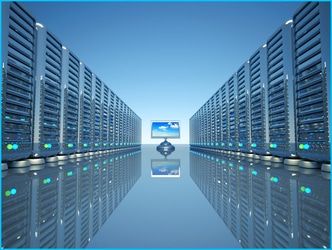Introduction
Data migration can be a lengthy and challenging, albeit necessary, process. The key to any successful data project is understanding what it is, why it is essential, the costs/risks and benefits involved, and how it is a vital component to the organization’s success.
What is Data Migration?
Data is the method of moving or replicating information between platforms, data formats, computer systems, or storage structures. It happens for multiple reasons: to upgrade/replace storage equipment or servers, to transport information to the cloud, organization mergers (data consolidation), upgrades in software, system maintenance, mergers or data center rearrangement, and to move away from legacy systems [1].
Why is Data Migration Needed?
The ability to successfully migrate data is a vital element to implementing new systems. Organizations inevitably will need to adopt new systems due to legacy operating systems and/or legacy data [2]. Moreover, technology and business requirements constantly change. As such, it helps increase productivity and performance and decreases costs in the long run if done correctly [4].
Data migration and Legacy Data/Systems?
Legacy data is the logged information that is in an organization’s existing storage structure. It includes various formats of data such as images, documents, and database records. On the other hand, a legacy system is when a business uses a computer, operating system, software, or program language that is outdated. Because they are generally either dated or incompatible with the organization’s vendor, legacy systems usually involve a lot of upkeep and/or adjustments just to make them compatible with other systems [2].
How does it work?
When legacy data is moved to a modern system, data migration occurs in several different ways:
- Information can be transferred
- Data can be replicated using file replication software.
- Information can be entered manually
- Data can be migrated by using database insert inquires [2].
What are the benefits?
Migrating information is very beneficial to an organization’s overall success. The following are the benefits associated with data migration:
- Gain a competitive advantage [5]
- Increases operations effectiveness and productivity [5]
- Increases data accuracy [5]
- Gives organizations the ability to control their automation [6].
What are the risks of data migration?
While the benefits of migrating data are vast, there are certain risks involved with the process. These risks include:
- Data loss: Lost data is considered the biggest risk because the costs, fees, and damage to an organizations reputation are high [4]
- Data Corruption: corrupt data affects data integrity [4]
- Cost overruns and going over budget
- Lost opportunity and potential business due to the project
- Financial loss caused by delays in the plan.
What are the costs?
According to a study conducted in 2011, $875,000 was the average budget organizations had for data migrations. However, only 62% of companies were able to complete the project on budget and within the given timeframe. Generally, the added costs of the project were $268,000 [3].
What are the Different Types of Data Migration?
There are numerous types of data migration [1]:
- Storage migration: happens when technology advances and information is moved in blocks from one storage method to another: it can be cloud, tape or disk storage
- Database migration: occurs when it is necessary to switch vendors, upgrade the software or transfer a database to the cloud
- Application migration: happens when converting to a different platform or vendor application
- Cloud migration: happens when information is transferred to the cloud because the cloud is flexible and delivers on-demand access.
Migrating Unstructured Data and Databases
Migrating data and databases is not a simple process, mainly because it involves the transfer of unstructured data and databases. Most organizations do not keep their information in a standardized format or database. As a result, unstructured information accounts for 80% of the organization’s data. Because unstructured data is uncontained, by migrating it, it saves organizations money on storage costs and potential lawsuits if audited data cannot be located [7].
References
- Rouse, Margaret (May 2013). http://searchstorage.techtarget.com/definition/data-migration”>“Data Migration”. Retrieved 24 June 2017.
- http://www.infotechnet.org/ntca/DataMigration.htm” “Data Migration”. InfoTech. Retrieved 24 June 2017.
- Musthaler, Linda (23 July 2015). http://www.networkworld.com/article/2951769/data-center/simplify-the-process-and-cut-the-cost-of-data-migration-and-data-acceleration.html “Simplify the process and cut the cost of data migration and data acceleration”. Network World. Retrieved 24 June 2017.
- Chellamuthu, Prabhu (18 September 2014). https://www.linkedin.com/pulse/20140918151302-65816706-data-migration-challenges-and-solution-for-successful-implementation”>“Data Migration Challenges and solution for successful implementation”. LinkedIn. Retrieved 24 June 2017.
- http://www.oracle.com/technetwork/middleware/oedq/successful-data-migration-wp-1555708.pdf “Successful Data Migration.” October 2011. Oracle. It was retrieved 24 June 2017.
- http://searchstorage.techtarget.com/podcast/Data-migration-projects-Avoid-data-migration-errors-with-automation-orphaned-storage-remediation. “Data migration projects: Avoid data migration errors with automation, orphaned storage remediation”. January 2010. Tech Target. Retrieved 24 June 2017.
- Pritchard, Stephan (October 2012). http://www.computerweekly.com/feature/How-to-manage-unstructured-data-for-business-benefit. “How to manage unstructured data for business benefit.” Computer Weekly. Retrieved 24 June 2017.
Related articles
https://www.enduradata.com/data-ingestion-and-data-integration-in-real-time
Share this Post
